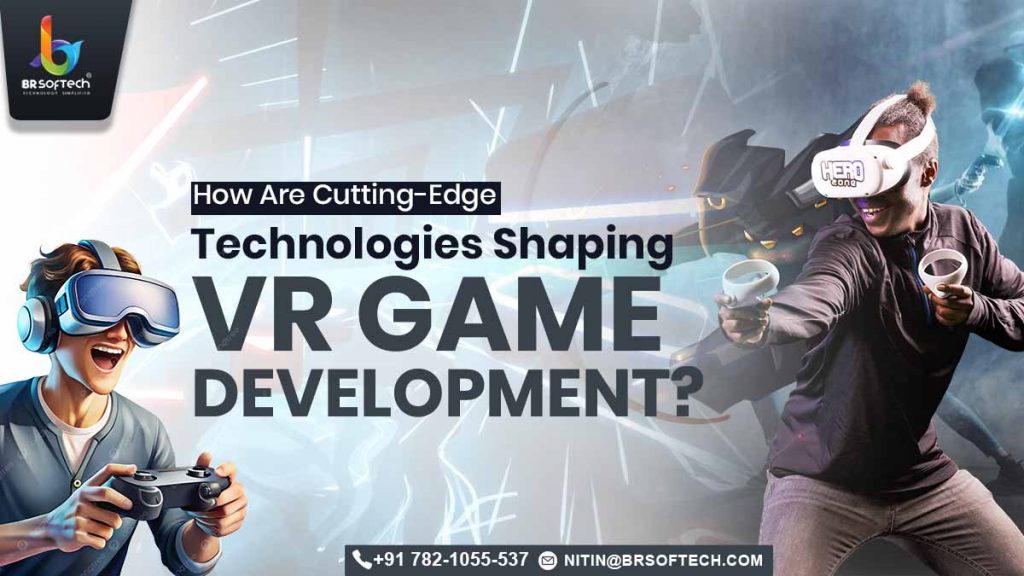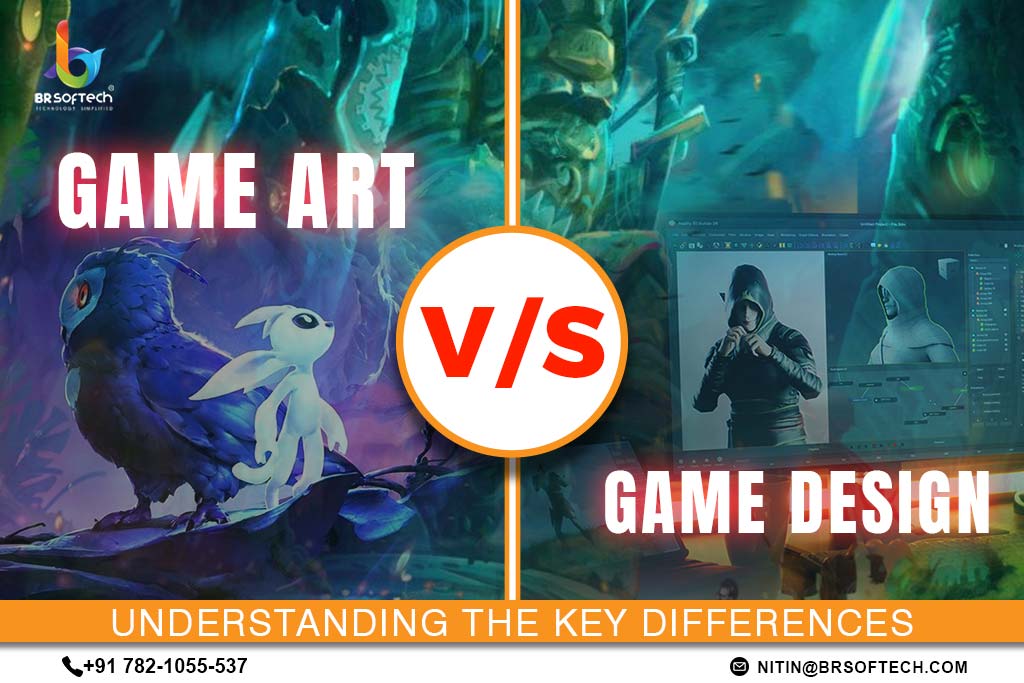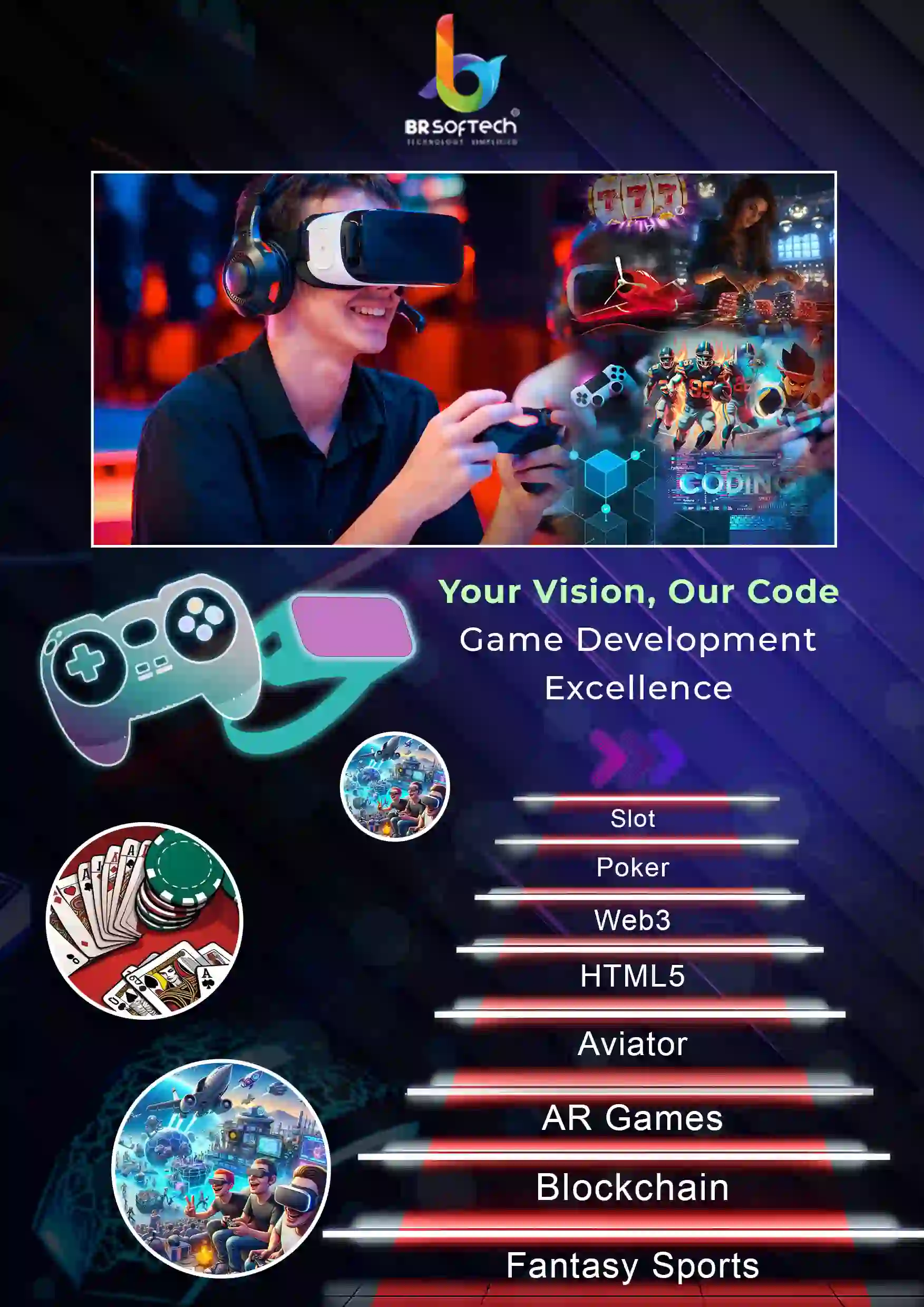VR game development has come a long way, from early minimalistic games to the development of games like Beat Saber. The cutting-edge technologies in VR like Meta Quest, Oculus Rift, and HTC Vive have enhanced realism, interactivity, and immersion. The technology has taken a leap; with AI-powered Non-Playable Characters, and real-time ray tracing, the trends in game development are pushing the boundaries of virtual reality gaming.
The Role of Cutting-Edge Technologies in VR
We already know that innovations in VR game development are making games more immersive and interactive than ever before. Let us understand in detail the key technologies influencing the industry.
1. Advanced VR Game Engines
The advanced VR games are designed and developed on cutting-edge game engines like Unreal Engine 4 and Unity. These game engines are at the forefront of VR game design trends. They handle hyper-realistic lighting and reflections seamlessly with the help of ray tracing technology. The interactions between characters are physics-based, and the generation of levels is done through the PLG algorithm.
- Real-time ray tracing in VR for hyper-realistic lighting and reflections.
- Physics-based interactions make virtual objects behave like real-world counterparts.
- Procedural generation for dynamic and ever-changing game worlds.
2. AI in VR Games
Artificial Intelligence is revolutionizing virtual reality gaming by enhancing the behavior of the bots and NPCs. The in-game characters or the NPCs are developed with the help of artificial intelligence which ensures human-like behaviors exhibited by the bots. The gameplay of the game also gets aligned with the player’s skills, and it is done through artificial intelligence. AI is also used in generating complex procedural levels.
- NPC Behavior – AI-driven characters react more naturally to player actions.
- Adaptive Gameplay – Personalized gaming experiences based on player habits.
- Procedural Content Generation – AI can generate vast, unpredictable game worlds.
3. AR and VR Gaming Integration
Augmented Reality (AR) and Virtual Reality (VR) are blending to create Mixed Reality (MR) experiences. Players can experience hybrid gaming interactions through the overlaying of augmented reality in virtual reality.
- AR overlays in VR worlds for hybrid gaming interactions.
- XR (Extended Reality) development enables seamless transitions between AR, VR, and MR.
4. VR Hardware Advancements
VR hardware advancements in modern times are making virtual reality gaming more accessible to players across the world. These gadgets provide an exceptional experience, you can feel an entire world unfold in front of your eyes. Gadgets like HTC Vive, Meta Quest, and PlayStation VR have unique features that make them special, some of the features include the ability to support high resolutions and display a wider field of view. The VR hardware advancements also help users to play their favorite VR games, without relying on a PC, or consoles.
- Higher-resolution displays with wider field-of-view (FOV).
- Standalone VR headsets eliminate the need for external PCs or consoles.
- Enhanced VR motion tracking for precise hand, body, and eye movement recognition.
5. Immersive Gaming Experiences with Haptic Feedback
One of the biggest breakthroughs in VR game development is haptic feedback, which allows players to feel the game through their senses. The haptics make the visuals in the game feel like they are really happening in real life. When a character touches you, you will feel the touch, simulating physical interaction. A VR Software Development Company plays a crucial role in integrating haptic technology, enhancing immersion, and pushing the boundaries of realistic gaming experiences.
- Haptic gloves and suits simulate physical touch.
- Force feedback controllers enhance realism in interactions.
- Full-body tracking for deeper immersion in virtual worlds.
6. 3D Spatial Audio in VR
Sound plays a crucial role in immersive gaming experiences, everybody agrees on this point. Therefore, the innovations in 3D spatial audio in VR go beyond imagination. The sound in virtual reality games is adjusted according to the positioning of the characters in the game. 3D spatial audio is one of the unique inventions that create a lively atmosphere around the users.
- Positional audio adjusts based on player movement.
- Binaural sound processing for ultra-realistic acoustic environments.
- AI-driven soundscapes adapt dynamically to in-game scenarios.
7. Cloud Gaming and VR
Cloud-based streaming is reducing the need for high-end hardware, meaning all your game data will be stored on a server, and you can retrieve it whenever you like. Cloud gaming and VR innovations help players to experience games even on lightweight devices. The technology provides low latency and offers real-time gameplay. Through cloud gaming, you can experience cross-platform gaming as well.
- Cloud-rendered VR games are accessible on lightweight devices.
- Low-latency streaming for smooth, real-time gameplay.
- Cross-device compatibility, allows VR games to run on multiple platforms seamlessly.
8. Metaverse and VR Gaming
The Metaverse is a game-changer for VR game development, as it beautifully clubs the open worlds of metaverse with VR gaming. Players can do multiple things inside a metaverse through virtual reality including interaction with other players, socializing, and trading.
- Persistent virtual worlds where players can interact, socialize, and trade.
- Blockchain in VR games for secure ownership of digital assets.
- Decentralized economies where players can earn real-world value through NFTs and cryptocurrency.
Future VR Game Design Trends
Looking ahead, VR game design trends will focus on hyper-realistic avatars of players for the best experience. Gameplays won’t be linear anymore and procedural storytelling will become a norm. The narratives can be controlled by players as they evolve in the game.
Furthermore, the game mechanics will be more accessible through non-traditional methods like controllers or joysticks.
- Hyper-realistic avatars driven by AI and motion capture.
- AI-powered procedural storytelling for non-linear, player-driven narratives.
- Seamless multi-sensory experiences, combining visual, auditory, and tactile feedback.
Conclusion
Cutting-edge technologies in VR are shaping the future of game development services, making virtual worlds more immersive, interactive, and lifelike. Advancements in VR game engines, AI integration, and VR hardware have redefined virtual reality gaming. With the evolution of the metaverse and VR gaming, the possibilities for innovation in the industry are endless.
Frequently Asked Questions(FAQs)
How is AI used in VR games? AI in VR games enhances NPC behavior, where bots’s behavior is unpredictable. It also generates procedural content and personalizes gameplay for individual players.
What are the biggest advancements in VR game engines? VR game engines feature real-time ray tracing, which is responsible for light and shadows. Physics-based interactions make sure that the gameplay mechanics look real. Procedural content generation helps in improving immersion, as new generations keep unlocking as you finish previous levels.
How does haptic feedback improve VR gaming? Haptic feedback in VR allows players to feel in-game interactions using haptic gloves, force-feedback controllers, and full-body suits. These wearables ensure that the players are getting feedback on the relevant part of their body with vibrations or other effects.
What role does the Metaverse play in VR gaming? Metaverse and VR gaming create persistent, interactive virtual worlds where players can socialize, trade assets, and engage in decentralized economies. Players can also roam the metaverse and immerse themselves in the open world while strolling on the streets.
How is blockchain technology influencing VR games? Blockchain in VR games secures digital asset ownership, enables NFT integration, and supports decentralized in-game economies. The smart contracts help improve the security, and asset management of the game.












